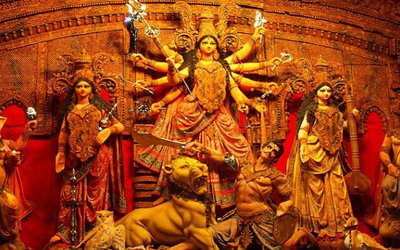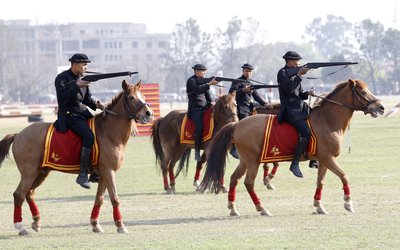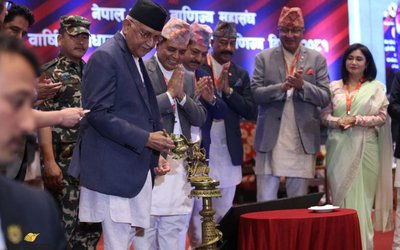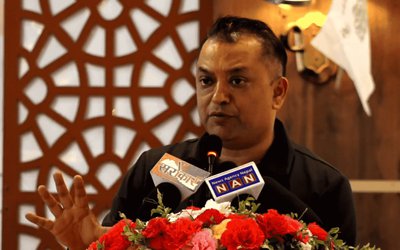
As we approach the conclusion of the Adhik Maas on August 16, 2023, a revived feeling of prosperity is set to grace our lives. It's worth mentioning that the Sawan month began on July 17, 2023 and come to and end on 16 August
Adhik Maas, also known as Purushottam Maas in the Hindu religion, holds great significance for devotees who engage in spiritual and religious activities to worship Lord Vishn.
Adhik Maas is also known as Purushottam Maas and Mal Maas in the Hindu religion. Adhik Maas holds an immense significance. During this period, devotees get involved in spiritual and religious activities and worship Lord Vishnu. It is believed that Lord Vishnu is Lord of Adhik Maas. In the year 2023, Adhik Maas is starting from today i.e., July 18, 2023 and it will end on August 16, 2023.
Adhik Maas 2023: Significance This year Adhik Maas has a special significance due to Shravan Maas. This will be a great celestial occurrence that is taking place after a gap of 19 years. The work on their spiritual journey and strengthen their devotion towards both Lord Shiva and Lord Vishnu. Devotees are going to get a great opportunity to worship Lord Shiva and Lord Vishnu.
This month will be full of devotion, positivity and there will be more divine energy flow everywhere in this universe. The combined energies of Shravan Mass and Purushottam Maas will create more spiritual vibrations which will aloow the devotees to make a divine connection with the Lord. This rare combination is a reminder to all the devotees that Lord Vishnu and Shiva are not separate, they are one and it shows their eternal bond as they worship each other. This is going to be great experience for the spiritual seekers.
Adhik Maas: Spiritual significance Adhik Maas holds a great spiritual significance among the devotees. This time will allow the devotees to engage in religious and spiritual practices as much as they can for their inner growth and spiritual upliftment. This month is full of fasting, puja, offerings, charity, devotion and mantra chanting by which they will feel more protective and full of energy. These practices will purify their thoughts and they would be able to make a good connection with almighty God.
Adhik Maas 2023: Rituals and Practices Practicing spiritual activities during Adhik will increase self realization and here are few spiritual practices which devotees can follow :-
- Getting up during Brahma Muhurat.
- Offering Arghya to Lord Surya at the time of rising.
- Chanting Lord Vishnu and Lord Shiva Mantras.
- Try to meditate while chanting 'Om'.
- Try to take one time meal. 6. Avoid having Tamsik food which includes - onion, garlic, egg and meat.
How Malmas Counts?
Malamas or Adhimas, which occurs every 32 months for 16 days and 1 hour and 36 minutes, is ending today.
According to Nepal Panchang Adjudicatory Development Committee, the month of Adhika which started from 2nd of July is going to end today. According to astrological calculations, there are 365 days in a solar year. There is a lunar year of 354 days.
Solar year and lunar year have 11 days extra time each year. To coordinate the solar and lunar years, the 32 months, 16 days, and 1 hour and 36 minutes come to the Malmasa or Adhimasa. If there is no Sankranti from one finger to the other, then the month is called Malamas or Adhikmas.
Two Sankranti periods in a month are called Kshayamas. Astrologer Bhaskaracharya has given a clear definition of Malamas and Kshayamas in his book Siddhanta Shiromani. which states –
Asankrantimasodhimas: Sphut: Syad.
Dwisankrantimas: Kshayakhya: Maybe.
That is, the month without Sankranti is Adhimasa or Malmasa. The month with two Sankranti is Kshayamas. Kshayamas happen only occasionally. Earlier, Vastu Shastri Shiv Pokharel said that Kshayamas fell in the year 2020.
Kshaymas falls in October, November and January. It also mostly decays in November and January. In the month of Kattik, there can be both Kshaya and Adhimasa. In the month of January, both the waning and the waxing moon do not occur. In the remaining eight months, there may be more months.
In the year when Kashimasa occurs, two more months also fall regularly. Most of these months are three months before or after Kshayamasa. The Adhimasa preceding Kshayamasa is called 'Samsarpa' and the Adhimasa after it is called 'Anhaspati'.
All are gods of mass. As there was no deity of the month of Malamas, Malamas went to Lord Krishna in tears and complained that everyone was calling him an inauspicious month. It is mentioned in the book Purushottammas Mahatmya that after listening to the complaints, Lord Krishna gave the name of Purushottammas that everyone will know you by my name.
Throughout the Malamas period, millions of devotees come from far and wide to visit Matsyanarayan or Machhenarayan. During the Malamas period, the Puja of Narayan and Purushottammas Mahatmya Vachan are held at Machhenarayan Temple, four km south of Kirtipur. Achyuta Adhikari, the president of Chandragiri Municipality-9, who is also the chairman of the fair management committee, informed the government that about two and a half million devotees have worshiped, worshiped and visited the Matsyanarayan temple so far this year.
He said that even though the fair ends today, it will be concluded on August 1st according to religious rituals.
It is mentioned in various scriptures that by worshiping Lord Narayan in this month, all sins will be destroyed and merit will be obtained. An artistic entrance of Garuda wearing a gold jalap is in the Machhenarayan temple. One can see a one-foot-tall four-armed idol holding a conch, chakra, donkey and padma emerging from the mouth of a fish.
Lord Vishnu first assumed the body of a fish during his ten incarnations. According to theologian Prof. Toyraj Nepal, it is mentioned in the Puranas that God in the form of a fish protected the Vedas by making a boat in the sea during the cataclysm.
This year, due to the month of July, many Nepali festivals, including Dasain, Tihar and Chhath, have been postponed. Earlier, the month of October 2078 and before that, June 2075 had a high month.
In this month, Vedic Sanatan Dharma devotees celebrate Purushottamamas Mahatmya at home by reciting and listening to stories. Purushottam Mass is celebrated by offering Malpuwa to Lord Purushottam and eating it by relatives and family members. On this occasion, there is a custom of Nepalese to donate Malpuwa by sending gifts to relatives such as gurus and priests, daughters, sons-in-law, nieces and nephews.
- Efforts to reform the economy are positive, but not enough: Dhakal
- Apr 10, 2025
- Government committed to preventing deterioration of business environment: PM Oli
- Apr 10, 2025
- Teachers Are Protesting On The Streets Of Kathmandu
- Apr 10, 2025
- Senior Advocate Vijaya Prasad Mishra elected as Bar Association president
- Apr 10, 2025
- No Amount of Washing And Cleaning Can Turn Former King Gyanendra Shah Into A Constitutional Monarch: Gagan Thapa
- Apr 10, 2025















